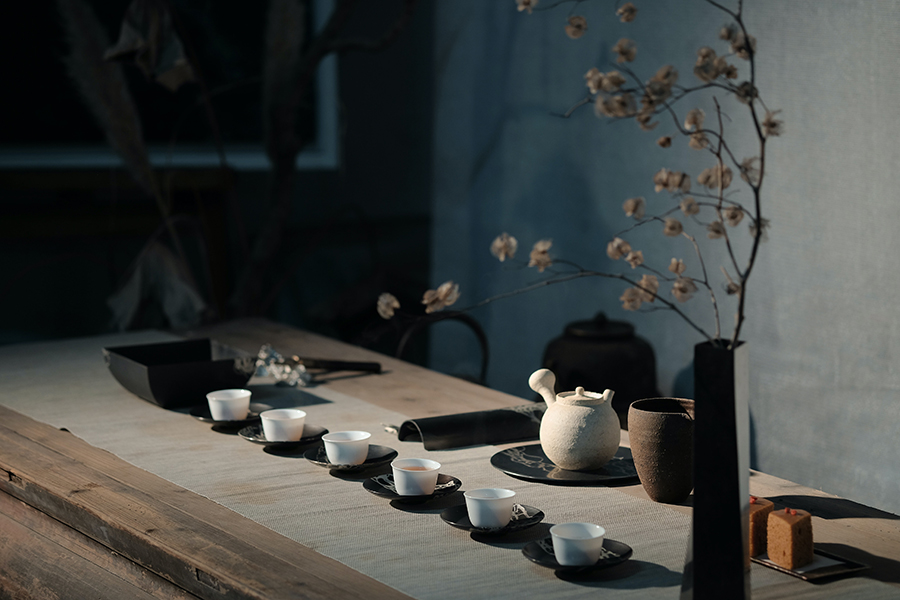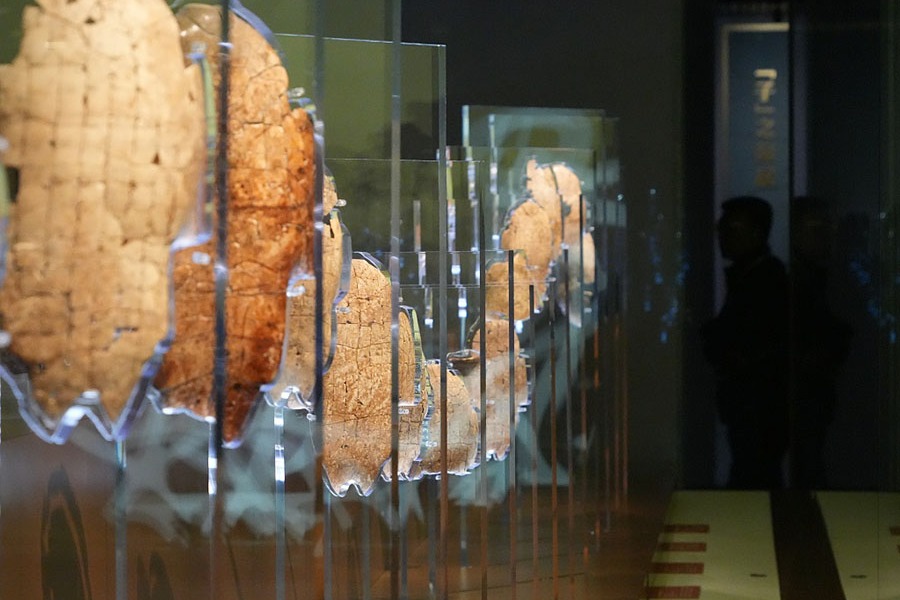喝杯茶吧 Do have a cup of tea
China Today 2024-01-07 09:00


The Chinese character for tea (chá) 茶 – a person standing beneath grass but above a tree – the character's three components – is a Chinese riddle in itself.
There is an old Chinese saying that everyday life proceeds on seven fundamentals – firewood, rice, oil, salt, soy sauce, vinegar and tea. Tea is a universally popular beverage in China, consumed at home and served at formal events as well. Throughout history, a specific etiquette has evolved on how to make, serve and drink it under the auspices of 茶文化 (chá wén huà), tea culture.
There are many Chinese expressions that include 茶, such as 粗茶淡饭 (cū chá dàn fàn), meaning coarse tea and simple food. But bear in mind that Chinese people intend to be self-effacing, so a so-called 粗茶淡饭 is unlikely to be the homely meal the expression implies. 人走茶凉 (rén zǒu chá liáng) literally means that when a guest leaves, his or her tea will cool. It is a metaphor for the situation where once an official is removed from a high position, people will give him the cold shoulder because he can no longer grant them favors.
The discovery of tea is attributed to Shennong, a legendary figure from prehistory believed to have founded Chinese agriculture and Traditional Chinese Medicine. To distinguish edible and medicinal plants from weeds, Shennong scoured mountainous areas and personally sampled various plant species. One day he felt sick after eating a toxic plant, and had to sit down to recover. When a few leaves fell from a nearby tree, he instinctively chewed them. They tasted good and soon dispelled the dizziness the toxin had caused. Shennong collected more 茶叶 (chá yè), tea leaves, for future analysis, and eventually invented the beverage.
China produces various teas, including 绿茶 (lǜ chá), green tea, 红茶 (hóng chá), black tea, 乌龙茶 (wū lóng chá), Oolong tea, 白茶 (bái chá), white tea, 黄茶 (huáng chá), yellow tea, and 黑茶 (hēi chá), dark tea. 花茶 (huā chá), jasmine tea, is also popular. It is a mixture of flowers and tea leaves, mostly green but also with elements of black or Oolong tea. The two are finely blended and sealed for a time to let the sweet scent of the flowers pervade tea leaves.

Preparing green tea entails the techniques of fixation, sweltering, rolling, drying, curing and more. As it is unfermented, green tea has a comparatively refreshing, raw flavor. 龙井茶 (lóng jǐng chá), Longjing or Dragon Well tea, is a prime green tea that stands head and shoulders above others by virtue of its delicate shade of green, the shape of its leaves and mellow, lingering taste. Genuine Longjing tea is hard to come by in the market, as the output is small.
红茶 translates from Chinese as red tea, because the liquid is of the color of amber due to fermentation (发酵, fā jiào), but is known as black tea in the West. The best-known brand of 红茶 is Qimen black tea (祁门红茶, qí mén hóng chá), named after its origins in Qimen in Anhui Province. It's believed that the fermentation process produces certain compounds beneficial to the stomach.
乌龙茶 is a semi-fermented tea native to China. Studies show that it helps the human body burn fat, and so is favored by those trying to lose weight. But excessive consumption can cause gastric problems.
One type of Oolong is 铁观音 (tiě guān yīn), appreciated for its lingering 回味 (huí wèi), aftertaste. It is said that the best-grade Tieguanyin retains its flavor even after seven refills. It is hence often compared with a sublime musical performance, where the audience is left with the impression that music still fills the air long after the last note has been played.
Now let's talk about 普洱 (pǔ ěr), a tea originating in southwestern China and also grown in Laos, Myanmar and Vietnam that was transported along the ancient Tea Horse Trail (茶马古道, chá mǎ gǔ dào). It is of the post-fermented type whose hallmarks include a dark shade and distinctive flavor. After being plucked from the tree, tea leaves are sun-baked, twisted, compressed into bricks and piled up to encourage beneficial ageing through exposure to the air. This process enabled preservation and convenient transportation over the long journeys its trade entailed in ancient times. According to Traditional Chinese Medicine, Pu'er has a warm, mild essence that nourishes Yang energy in the human body, hence the proverb Longjing in summer, Pu'er in winter (夏喝龙井,冬饮普洱 xià hē lóng jǐng , dōng yǐn pǔ ěr).
When entertaining visitors, it is customary for the host to 敬茶 (jìng chá), serve them tea with courtesy, but not necessarily observing strict formalities. Today 茶艺 (chá yì), Tea Art, is only performed in the grandest teahouses. There are different names in China for business establishments that specialize in serving tea, such as 茶馆 (chá guǎn), teahouse, 茶室 (chá shì), tea parlor and 茶楼 (chá lóu), two-story teahouse, depending on their size and price list.
There are few pleasures that match escaping from the hustle and heat of a summer day to a teahouse, ordering a pot of tea and some 茶点(chá diǎn), or dim sum, and basking in peace and relaxation for a few hours.
来源: China Today
编辑: 万月英

















 英语点津微信
英语点津微信 双语小程序
双语小程序